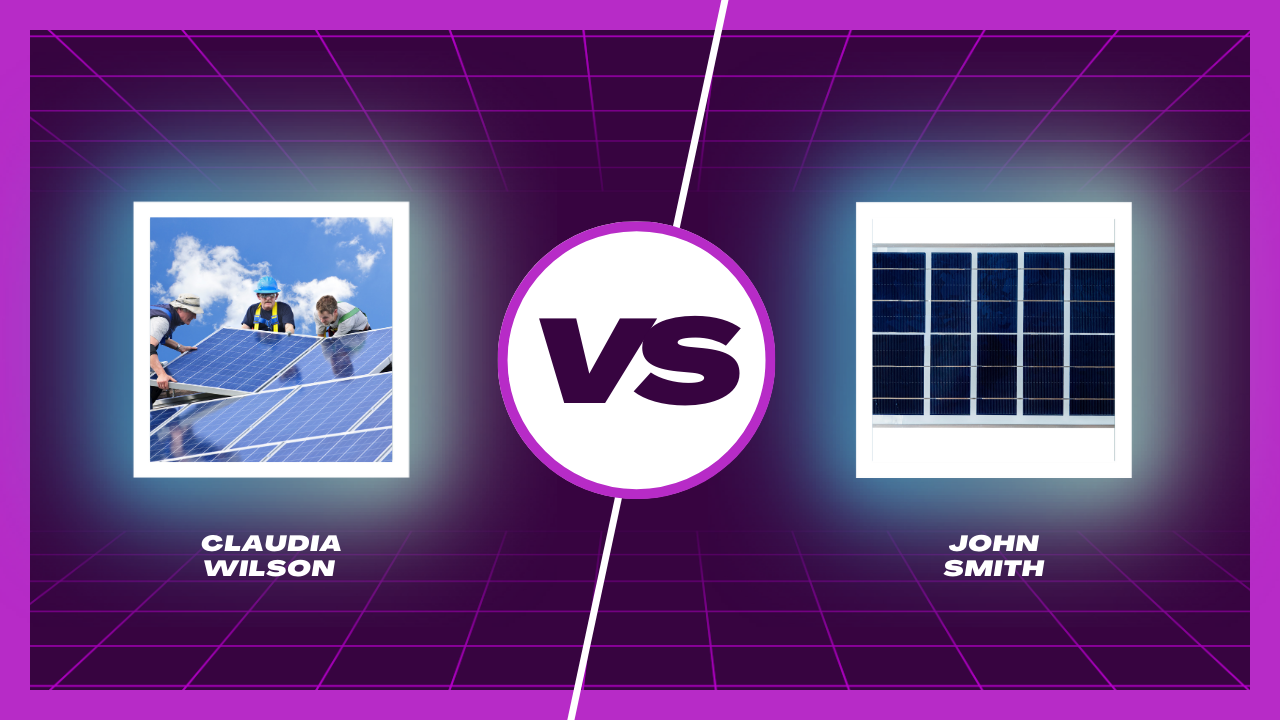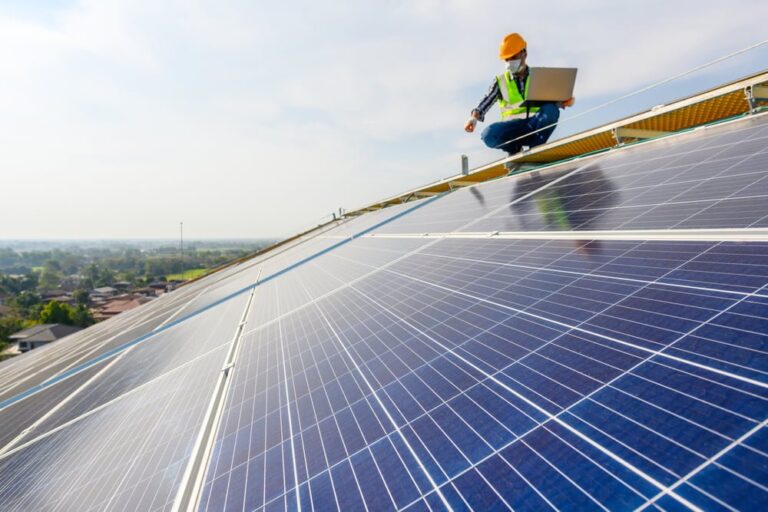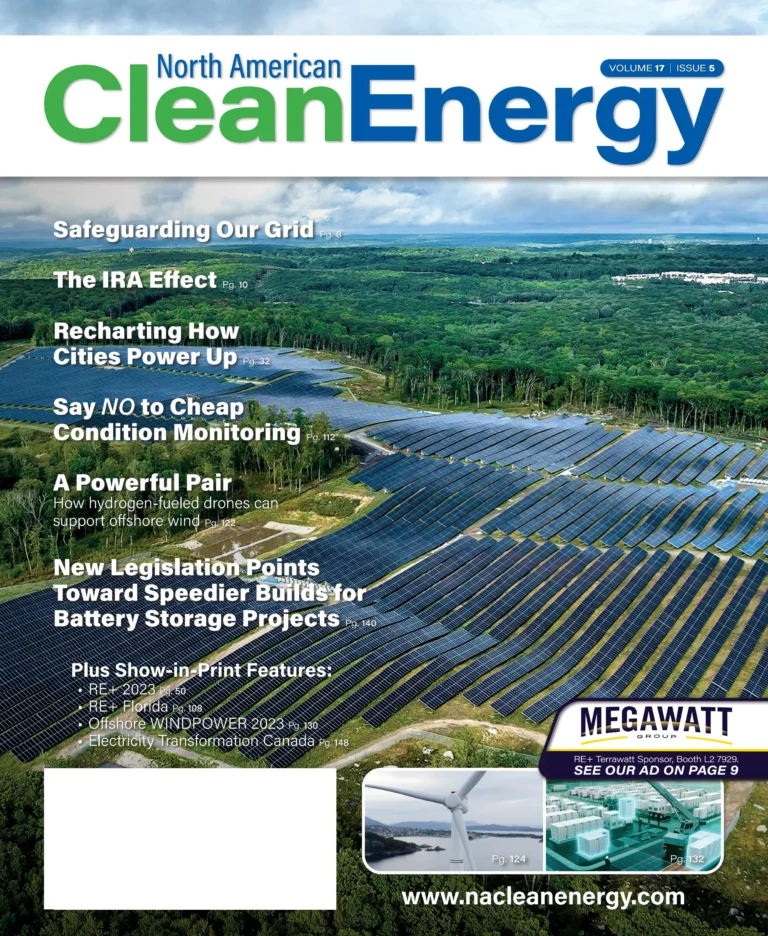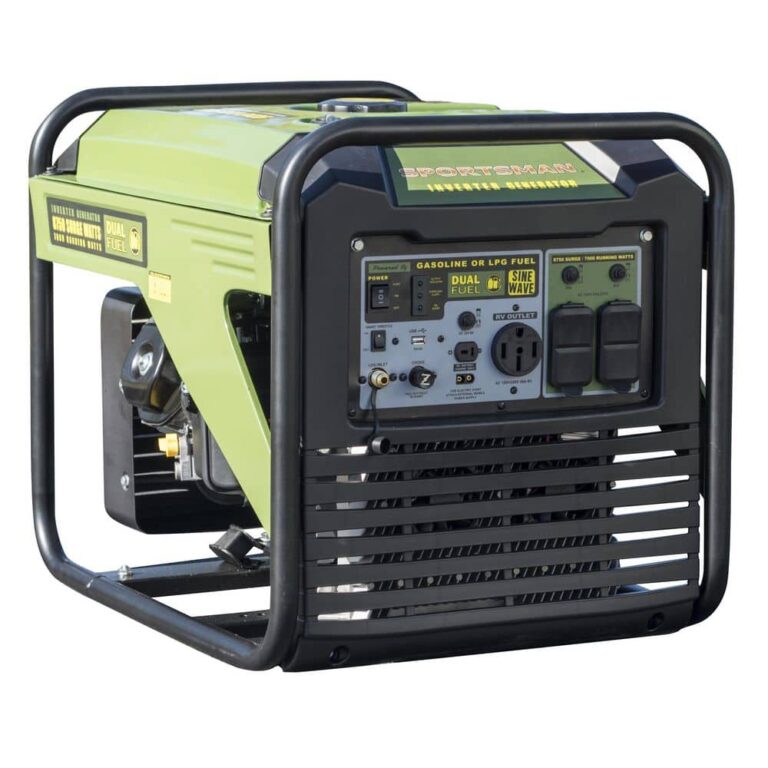Shingled Solar Panels Vs Monocrystalline: Unveiling the Power Differences
Shingled solar panels offer better mechanical performance compared to monocrystalline panels. They are more resistant to failure due to external forces, making them a reliable choice.
Shingled solar modules cut solar cells into strips and overlap them inside the framed module, allowing for higher power production per square meter. Additionally, they are aesthetically pleasing and improve overall system reliability. In contrast, monocrystalline panels may have higher installation costs and lower efficiency ratings.
Shingled solar panels and monocrystalline panels are two popular options for harnessing solar energy. Shingled solar panels, also known as shingled solar modules, offer better mechanical performance and improved reliability compared to monocrystalline panels. They are designed with solar cells cut into strips and overlapped inside the framed module. This innovation allows for higher power production per square meter and also enhances the aesthetic appeal of the solar installation. On the other hand, monocrystalline panels may have higher installation costs and lower efficiency ratings. We will explore the differences between these two types of solar panels to help you make an informed decision for your solar energy needs.
Subheading: Understanding Shingled Solar Panels
Definition And Manufacturing Process Of Shingled Solar Panels
Shingled solar panels refer to a type of solar panel manufacturing process known as “shingling.” This process involves cutting solar cells into strips and overlapping them inside the framed module. Unlike traditional solar panels, shingled solar panels require no ribbon connectors, which allows for higher power production per square meter. This innovative technique has gained traction in the solar industry due to its improved efficiency and reliability.
Benefits Of Shingled Solar Panels
There are several benefits associated with shingled solar panels:
- Higher Power Production: Shingled solar panels can produce more power per square meter compared to conventional panels. This increased power production is due to the elimination of ribbon connectors and efficient utilization of solar cells.
- Improved Reliability: Shingled solar panels are designed to have better mechanical performance and resistance to external forces. Static and dynamic load tests have shown that the shingle approach is more resistant to failure caused by external factors, ensuring long-term durability.
- Enhanced Aesthetics: Shingled solar panels feature a sleek and uniform appearance. The absence of ribbon connectors and the overlapping solar cells create a visually appealing panel that seamlessly integrates into the surrounding environment.
Drawbacks Of Shingled Solar Panels
While shingled solar panels offer numerous advantages, it is important to consider their drawbacks:
- Higher Installation Costs: Shingled solar panels generally have higher installation costs compared to traditional panels. The intricate manufacturing process and specialized materials contribute to the increased upfront expenses.
- Lower Efficiency Rating: Shingled solar panels may have a slightly lower efficiency rating compared to monocrystalline panels. However, advancements in shingled technology continue to close this efficiency gap, making shingled panels a competitive option.
- Limited Availability: Due to being a relatively newer technology, the availability of shingled solar panels might be limited compared to traditional panels. However, with increased demand and growing market adoption, it is expected that availability will improve over time.
In conclusion, understanding the definition and manufacturing process of shingled solar panels is essential to assess their benefits and drawbacks accurately. While shingled solar panels offer increased power production, improved reliability, and enhanced aesthetics, it is important to consider the higher installation costs, slightly lower efficiency rating, and limited availability. As the solar industry continues to advance, shingled solar panels are expected to become an increasingly popular and cost-effective option for residential and commercial solar installations.
Subheading: Introduction To Monocrystalline Solar Panels
When it comes to choosing the right type of solar panels for your renewable energy system, it is important to understand the different options available in the market. One of the most popular choices among homeowners and businesses alike is monocrystalline solar panels. In this section, we will provide a comprehensive overview of monocrystalline solar panels, including their definition and manufacturing process, as well as their advantages and disadvantages.
Definition And Manufacturing Process Of Monocrystalline Solar Panels
Monocrystalline solar panels are made from a single crystal structure, typically silicon, which gives them a distinctive black color. The manufacturing process involves growing a single crystal of silicon and then slicing it into thin wafers. These wafers are then assembled into a solar panel by attaching metal contacts and encapsulating them with a protective layer of tempered glass.
The use of a single crystal structure in monocrystalline solar panels results in a higher efficiency compared to other types of solar panels. The uniformity of the crystal structure allows for a more efficient capture of sunlight, ensuring maximum energy conversion.
Advantages And Disadvantages Of Monocrystalline Solar Panels
Monocrystalline solar panels offer several advantages over alternative options. Here are some of the key benefits:
- High Efficiency: Due to their uniform crystal structure, monocrystalline solar panels have higher conversion efficiency, making them an excellent choice for limited roof space or areas with low sunlight exposure.
- Sleek Appearance: The uniform black color of monocrystalline solar panels gives them a sleek and modern look, making them an aesthetically pleasing addition to any building.
- Durability: Monocrystalline solar panels are known for their durability and long lifespan, with many manufacturers offering warranties of up to 25 years.
- Space Efficiency: With their high efficiency, monocrystalline solar panels require less space to generate the same amount of electricity compared to other types of panels.
Despite their numerous advantages, monocrystalline solar panels also have some disadvantages to consider:
- Higher Cost: Monocrystalline solar panels tend to be more expensive compared to other types of panels. However, their higher efficiency can offset the initial investment over time through increased energy savings.
- Temperature Sensitivity: Monocrystalline solar panels are sensitive to high temperatures, which can affect their overall efficiency. Proper cooling mechanisms should be considered during installation to mitigate this issue.
- Manufacturing Process: The production of monocrystalline solar panels involves advanced manufacturing techniques, resulting in a higher carbon footprint compared to other panel types.
In conclusion, monocrystalline solar panels are a popular choice due to their high efficiency, sleek appearance, and durability. However, their higher cost and sensitivity to high temperatures should be taken into account when considering this option for your solar energy system.
Subheading: Power Output Comparison
When it comes to choosing between shingled solar panels and monocrystalline solar panels, comparing their power output is a crucial factor. The power output of a solar panel determines how much electricity it can generate, making it an essential consideration for any homeowner or business interested in investing in solar energy.
Comparison Of Power Output Between Shingled Solar Panels And Monocrystalline Solar Panels
To better understand the power output of each type of panel, let’s compare shingled solar panels and monocrystalline solar panels side by side.
Shingled Solar Panels:
- Shingled solar panels are known for their innovative design that replaces traditional ribbon connections with overlapping solar cells.
- This design allows shingled solar panels to produce higher power output per square meter compared to conventional panels.
- Due to the shingle approach, these panels can generate more electricity, resulting in increased energy production.
Monocrystalline Solar Panels:
- Monocrystalline solar panels are made from a single crystal structure, giving them a uniform and smooth appearance.
- These panels are known for their high efficiency and excellent power output.
- Monocrystalline solar panels typically have a higher power output compared to other types of solar panels.
Factors Affecting The Power Output Of Each Type Of Panel
While both shingled solar panels and monocrystalline solar panels have their advantages, several factors can affect their power output:
| Factors | Shingled Solar Panels | Monocrystalline Solar Panels |
|---|---|---|
| Temperature | Shingled solar panels have a slightly lower temperature coefficient, meaning their performance can be slightly better in hot climates. | Monocrystalline solar panels have a higher temperature coefficient, which means their performance may decrease slightly in high temperatures. |
| Shading | Shading can have a significant impact on the power output of shingled solar panels. Even partial shading can considerably reduce their efficiency. | Monocrystalline solar panels are less affected by shading, making them a better option for installations with potential shading issues. |
| Space Availability | Shingled solar panels can be a more suitable choice for installations with limited roof space, as they offer higher power output per square meter. | Monocrystalline solar panels may require more space due to their lower power output per square meter. |
Ultimately, the choice between shingled solar panels and monocrystalline solar panels depends on various factors such as climate, shading, and available space. It is important to consult with a solar energy professional to determine which type of panel is the best fit for your specific needs and optimize the power output of your solar installation.

Credit: www.pomcube.com
Subheading: Efficiency And Cost Analysis
Comparison Of Efficiency And Cost Between Shingled Solar Panels And Monocrystalline Solar Panels
When it comes to choosing the right solar panels for your renewable energy needs, it is essential to consider both efficiency and cost. Shingled solar panels and monocrystalline solar panels are two popular options in the market, each with its own unique advantages and disadvantages. In this section, we will compare the efficiency and cost of these two types of solar panels to help you make an informed decision.
Efficiency
Efficiency is a crucial factor to consider when evaluating solar panels. It determines how effectively the panels convert sunlight into electricity. In this aspect, monocrystalline solar panels have long been known for their high efficiency. These panels are made from a single crystal structure, allowing them to generate more electricity in less space compared to other types of solar panels.
On the other hand, shingled solar panels offer a notable improvement in efficiency compared to traditional solar panels. These panels utilize a unique manufacturing process that involves cutting solar cells into strips and overlapping them inside the framed module. This design enables them to produce higher power per square meter, making them a compelling option for those looking to maximize energy production in limited space.
| Panel Type | Efficiency |
|---|---|
| Monocrystalline | High |
| Shingled | Improved efficiency compared to traditional panels |
Cost
Cost is another crucial consideration when investing in solar panels. Monocrystalline solar panels tend to be more expensive compared to other types of solar panels. This is primarily due to their manufacturing process, which involves growing a single crystal structure, making them more labor-intensive and requiring higher production costs.
Shingled solar panels, on the other hand, offer a more cost-effective alternative. Their manufacturing process involves overlapping solar cell strips, which reduces material waste and lowers production costs. This makes shingled solar panels a more affordable option for those with budget constraints.
Long-term Cost Considerations And Return On Investment (roi)
When considering the cost of solar panels, it is essential to take a long-term perspective and consider the return on investment (ROI). While monocrystalline solar panels may have a higher upfront cost, their higher efficiency can result in greater energy savings over time. The increased energy production can offset the initial investment and provide a higher ROI in the long run.
Similarly, shingled solar panels may have a lower upfront cost, but their improved efficiency can result in significant energy savings. This, combined with their cost-effective manufacturing process, makes them an attractive option for those looking to maximize their ROI.
In Conclusion
When comparing the efficiency and cost of shingled solar panels and monocrystalline solar panels, it’s important to consider your specific needs and budget. While monocrystalline solar panels offer high efficiency, shingled solar panels provide improved efficiency and cost-effectiveness.
Ultimately, the choice between shingled solar panels and monocrystalline solar panels will depend on factors such as available space, budget, and desired energy output. It is recommended to consult with a solar energy professional to determine the best option for your specific requirements.
Subheading: Selection Factors And Conclusion
Factors To Consider When Choosing Between Shingled Solar Panels And Monocrystalline Solar Panels
When deciding between shingled solar panels and monocrystalline solar panels, there are several key factors to consider. These factors will help you determine which type of panel is best suited for your specific needs and preferences.
1. Efficiency: Monocrystalline solar panels are known for their high efficiency, as they are made from a single crystal structure. This means that they are able to convert a higher percentage of sunlight into electricity compared to shingled solar panels. If maximizing efficiency is a top priority, monocrystalline panels may be the better choice.
2. Cost: Shingled solar panels are generally less expensive than monocrystalline panels. The shingling manufacturing process allows for higher power output while using fewer solar cells, making them a more cost-effective option. If budget is a concern, shingled panels may be the more affordable choice.
3. Space: Shingled solar panels have a higher power density, meaning they can generate more power in a smaller area. If you have limited roof space and want to maximize power output, shingled panels may be the ideal choice. On the other hand, if you have ample space and want to prioritize aesthetics, monocrystalline panels can be arranged in a sleek and uniform manner.
4. Durability: Shingled solar panels are known for their superior mechanical performance. They are more resistant to failure due to external forces such as wind and snow loads compared to monocrystalline panels. If you live in an area with harsh weather conditions, shingled panels may offer greater durability and peace of mind.
5. Availability: Monocrystalline solar panels have been on the market for a longer time and are readily available from various manufacturers. Shingled panels, while gaining popularity, may have limited availability depending on your location. If availability is a concern, monocrystalline panels offer a wider range of options.
Summary Of The Power Differences And Recommendations For Different Scenarios
In summary, monocrystalline solar panels are known for their higher efficiency and sleek design, making them a great choice for those who prioritize performance and aesthetics. On the other hand, shingled solar panels offer a more cost-effective and space-efficient solution, making them ideal for those with limited roof space or budget constraints.
For homeowners who live in areas with harsh weather conditions, shingled panels provide added durability and resistance to external forces. Additionally, shingled panels are a good choice for those looking to maximize power output in a smaller area.
In conclusion, the decision between shingled solar panels and monocrystalline solar panels ultimately depends on your specific needs and constraints. Consider factors such as efficiency, cost, space availability, durability, and availability when making your decision. By weighing these factors, you’ll be able to choose the right type of solar panel that meets your energy goals and budget.
Frequently Asked Questions Of Shingled Solar Panels Vs Monocrystalline
Are Shingled Solar Panels Better?
Shingled solar panels are better than conventional panels because they have better mechanical performance and are more resistant to failure due to external forces. They also produce higher power per square meter, improve reliability, and have a more aesthetic appearance.
However, they may have higher installation costs and limited availability compared to traditional solar panels.
What Is A Shingled Solar Panel?
A shingled solar panel is a type of solar panel that uses a manufacturing process called “shingling. ” It involves cutting solar cells into strips and overlapping them inside the framed module. Shingled solar panels offer better mechanical performance and can produce higher power per square meter compared to conventional panels.
They are also aesthetically pleasing and improve reliability. However, they may have higher installation costs and lower efficiency ratings compared to traditional solar panels.
What Are The Drawbacks Of Solar Shingles?
Solar shingles have some drawbacks compared to solar panels: 1. Higher installation costs. 2. Lower efficiency rating. 3. Limited availability.
Why Are Solar Shingles Less Efficient?
Solar shingles are less efficient compared to traditional solar panels due to the following reasons: 1. Higher installation costs. 2. Lower efficiency rating. 3. Limited availability.
Conclusion
Shingled solar panels and monocrystalline panels have their unique advantages and drawbacks. Shingled panels offer better mechanical performance and higher power production per square meter. On the other hand, monocrystalline panels are known for their higher efficiency and aesthetics. While shingled panels may be more resistant to external forces, monocrystalline panels have a lower installation cost and wider availability.
Ultimately, the choice depends on individual needs and preferences. Consider factors such as budget, space availability, and desired power output when making a decision.







